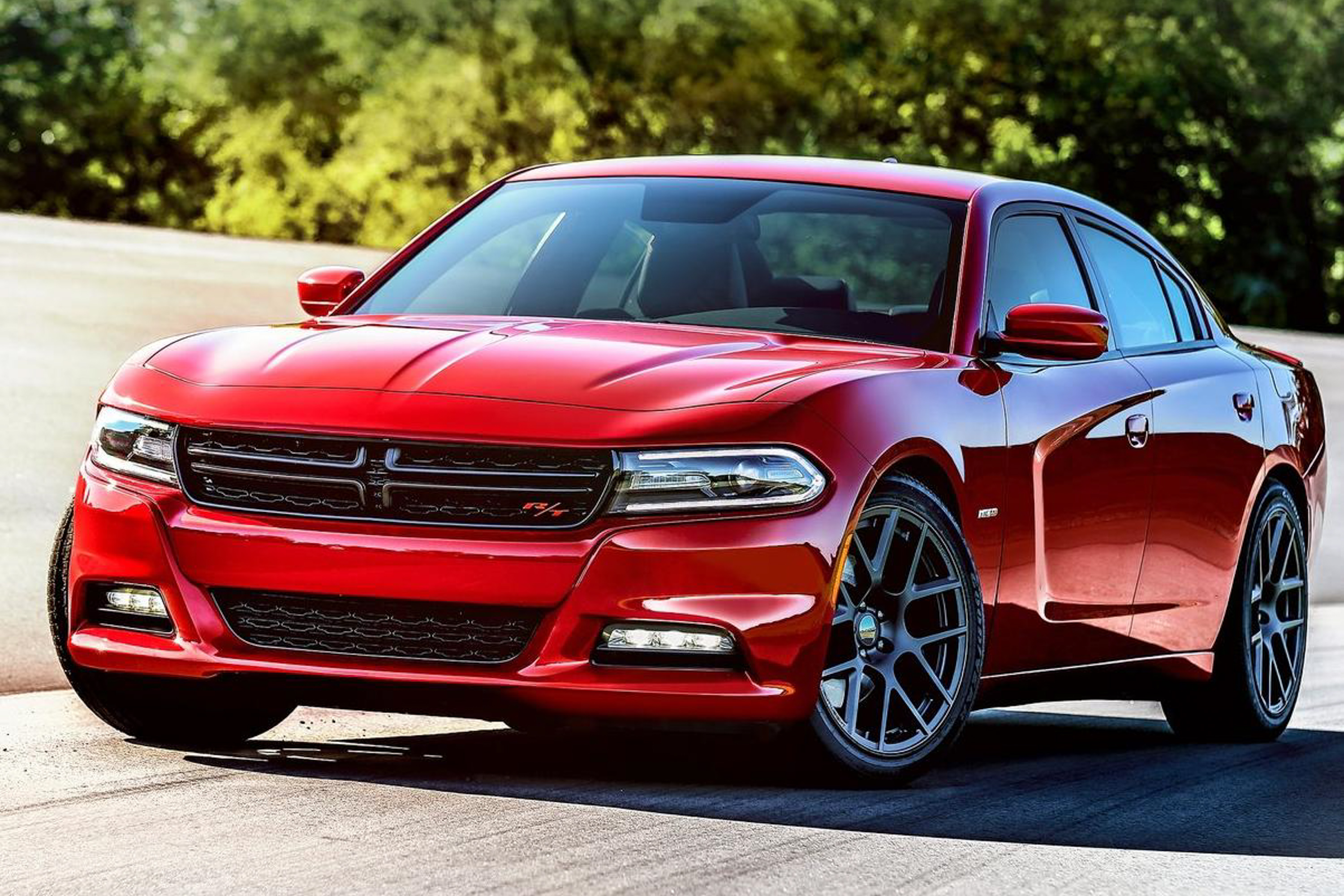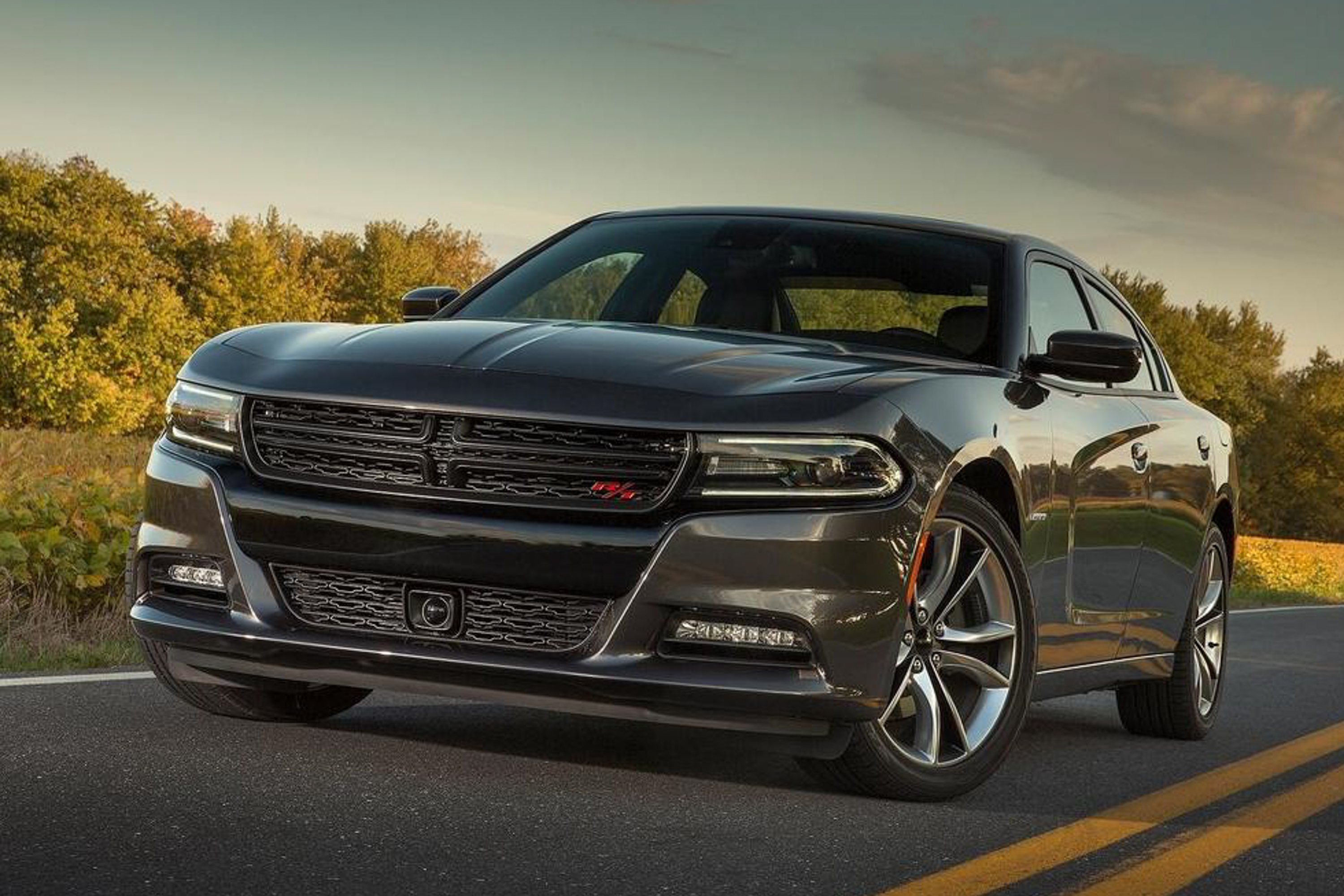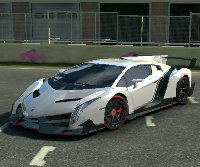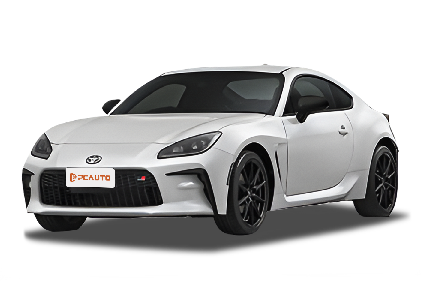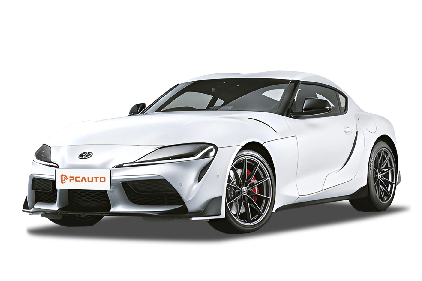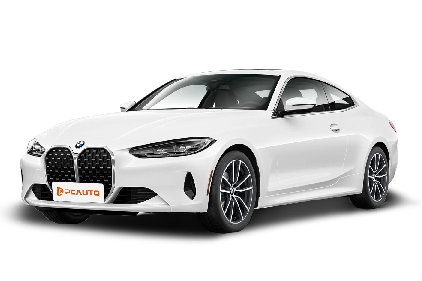Q
How many catalytic converters in a Dodge Charger?
The number of catalytic converters in a Dodge Charger depends on its specific model year and engine setup. Take the sixth-gen models (post-2015), which are common in Malaysia, for example. The R/T trim with the 5.7L HEMI V8 typically comes with 2 catalytic converters. But the high-performance variants? The 6.4L HEMI V8 (like the Scat Pack) or the supercharged 6.2L HEMI V8 (think Hellcat) usually pack 4 cats to meet stricter emission standards. Heads up, Malaysian owners – the exact number might vary slightly on locally imported versions due to differences in local environmental regulations.
Catalytic converters are the heart of the exhaust system, zapping harmful emissions into CO2 and water. Their count ties directly to engine displacement, cylinder layout, and emission rules. If your Charger's feeling sluggish or the check engine light pops on, start by checking the exhaust system – including the cats. Malaysia's hot and humid climate can speed up their wear and tear too, so it’s a good idea to ask your mechanic to inspect them during regular service.
Q
What is the difference between a Dodge Charger and a Hellcat?
The main difference between the Dodge Charger and the Hellcat lies in their performance and positioning. The Charger is a classic American muscle car, offering a range of powertrains from V6s to V8s, making it a solid choice for daily driving and for those seeking a balance of performance and practicality. The Hellcat, in contrast, is the high-performance variant dialed to the extreme. It packs a 6.2-liter supercharged V8 engine that delivers a formidable 717 horsepower, engineered specifically for enthusiasts pursuing the ultimate driving thrill. To match this power, the Hellcat comes with upgraded brakes, a enhanced suspension, and distinctive exterior elements like a more aggressive grille and unique wheels, all signaling its high-performance pedigree. For Malaysian car enthusiasts, although these models are relatively rare on local roads, their distinct American style and raw power continue to hold strong appeal. It's worth noting, however, that the Hellcat's high fuel consumption and substantial dimensions may pose practical challenges on Malaysia's narrower roads and in the context of its fuel prices. Nonetheless, its breathtaking acceleration and sheer driving excitement remain a powerful draw for many. Additionally, while other high-performance models in the Dodge lineup, such as the Demon and Redeye, share a similar philosophy, the Hellcat is particularly noted for striking an effective balance between everyday usability and extreme performance.
Q
How many miles per gallon does the Dodge Charger achieve?
The Dodge Charger's fuel economy varies depending on the specific trim and engine setup. Take the rear-wheel-drive model with the 3.6L V6, for example—it'll sip around 19-23 MPG in the city and stretch to 30-31 MPG on the highway. Step up to the high-performance 6.4L V8 HEMI, and you're looking at roughly 15-17 MPG in urban driving and 24-25 MPG out on the open road. If you opt for the even more beastly 6.2L supercharged V8 in the Charger SRT Hellcat, city fuel economy drops to about 12-13 MPG, with highway figures coming in at 21-22 MPG.
For our readers in Malaysia, keep in mind these numbers are based on U.S. EPA testing standards. Real-world fuel efficiency can vary depending on your driving style, road conditions, and fuel quality. Since Malaysia uses the metric system, you can convert these MPG figures to liters per 100 kilometers for easier reference (1 MPG ≈ 0.425 km/L).
Also, hybrid or future electric versions could offer better efficiency down the line. Before making a purchase, it's smart to check local specifications and tax policies—big-displacement engines might mean higher road taxes in Malaysia. And don't forget, regular maintenance and keeping your tires properly inflated can also help optimize fuel economy.
Q
When was Dodge Charger released?
The Dodge Charger first hit the scene back in 1966, and man, did it make a statement. As a classic American muscle car, it quickly became the poster child for power and style. That first-gen model packed some serious V8 heat, like the legendary 7.0-liter Hemi, setting the bar high for what a high-performance ride should be.
Over in Malaysia, you don't see Chargers cruising around every day—they're pretty rare birds. But when you do spot one, heads turn. Its bold, in-your-face design and brute force under the hood still hook a solid group of local gearheads.
Through the years, the Charger's gone through some major evolutions. The latest model? It's like they took that classic muscle soul and injected it with 21st-century tech. We're talking advanced driver-assistance systems, more efficient powertrains—think 3.6L V6 and 5.7L V8 options—and then there's the beastly Hellcat trim, rocking a 6.2L supercharged V8 that cranks out over 700 horsepower. Insane, right?
For Malaysian car fans, the Charger isn't just a car—it's a symbol of that wild, unapologetic American muscle spirit. Yeah, the local market's mostly dominated by Japanese and European rides, but you'll catch the occasional imported Charger rolling around, especially in enthusiast circles. Whether it's a vintage classic or a modern rocket ship, the Charger's history and raw performance have cemented its spot as an icon in car culture. And let's be real—either way, it's all about that pure, unfiltered American driving thrill.
Q
What is the sport traction control of the Dodge Charger?
In the Dodge Charger, Traction Control Sport is an electronic stability feature engineered specifically to amp up the driving fun. It dials back the traction control intervention when you're pushing the car hard, letting the rear wheels break loose a little in a controlled way. This helps you get more agile turn-in or even a little power slide, all while still keeping that baseline safety net in place.
You’ll usually find a button on the center console to kick it on. It’s right at home on a track or closed course, but for your daily grind on the streets, sticking with the default mode is the smart call for safety. Now, for our friends in Malaysia, those wet, rainy roads can up the ante on wheel spin, so definitely use this feature with a bit of extra caution.
Here’s the lowdown on how it works: sensors keep an eye on wheel speed differences, and if things start to get sketchy, the system automatically tweaks engine power or hits the brakes to keep you from losing control. Different brands slap different names on similar setups—like ESC Sport or VDC Off—but they’re all chasing that same sweet spot between safety and raw handling.
If you’re hungry to dive deeper into car electronics, check out stuff like electronic limited-slip differentials or torque vectoring. They’re all part of the tech package that makes modern performance cars handle as good as they do.
Q
How many miles can Dodge Charger travel?
For Malaysian consumers wondering about the Dodge Charger's durability, this American muscle car typically clocks in 320,000 to 480,000 kilometers over its lifespan—mileage that really hinges on how well you maintain it and your driving habits. With Malaysia's hot and rainy climate, make sure to pay extra attention to regular checks on the cooling system and rubber components. Stick to the manufacturer's recommended service interval of 5,000 to 7,500 miles (around 8,000 to 12,000 km), and using full synthetic oil will definitely help extend the engine's life. The Charger's Hemi V8 is known for being tough as nails, but stop-and-go city traffic can wear out the clutch faster. So, if you're regularly driving in congested areas like KL, consider shortening the gearbox oil change interval a bit. It's worth noting that the right-hand-drive version in Malaysia shares basically the same mechanicals as left-hand-drive models, and parts supply is solid through authorized dealers, keeping long-term ownership costs manageable. If you're eyeing a used model, focus on checking the electronics in post-2015 cars—their Uconnect infotainment systems can get laggy if not maintained, but that doesn't hurt the overall mechanical reliability of the car.
Q
How to install the cold air intake on Dodge Charger?
Installing a cold air intake system on your Dodge Charger is a solid mod that can boost both engine performance and fuel efficiency. First off, you’ll need to grab the right cold air intake kit—make sure it’s compatible with your Charger’s engine model. Here in Malaysia’s hot climate, go for intake tubes made from heat-resistant materials like aluminum alloy or high-density plastic; they’ll hold up better over time. The installation steps involve yanking out the stock air filter box, disconnecting the sensor plugs, fitting the new intake piping and high-flow air filter, and making sure all connections are sealed tight to keep unfiltered air out of the engine. Once it’s all set up, check if the check engine light comes on—if it does, you might need an OBD2 scanner to reset the ECU so it adjusts to the new air intake volume.
Basically, a cold air intake works by lowering the temperature of the incoming air, which increases oxygen density and improves combustion efficiency. But heads up: during Malaysia’s rainy season, you’ll want to add a waterproof shield to prevent the engine from sucking in water. Also, keep in mind that mods like this could affect your factory warranty, so it’s smart to check with an authorized service center before diving in. If you’re chasing even better results, pairing it with an exhaust system upgrade can help, but make sure everything stays within JPJ’s noise and emissions regulations.
Q
What's the weight of Dodge Charger?
The weight of the Dodge Charger varies depending on the trim level and configuration. Generally speaking, its curb weight ranges from around 1,900 kg to 2,200 kg. For example, the base Charger SXT tips the scales at approximately 1,920 kg, while the high-performance Charger Hellcat is closer to 2,260 kg. Exact figures can vary slightly by model year and optional extras, so it's always best to check those details if you're looking at a specific car.
For Malaysian owners or enthusiasts, understanding a car's weight does play a role in daily driving and fuel economy. A heavier chassis typically translates to more stable highway cruising, though it might nudge fuel consumption up a tiny bit. Also, Malaysia's tropical climate and road conditions can have subtle effects on vehicle performance, so keeping up with regular maintenance is a good move to ensure your Charger runs at its best.
As a classic American muscle car, the Dodge Charger has always been a hit thanks to its brute power and head-turning styling. While it's not exactly a mainstream choice on Malaysian roads, it definitely has a dedicated following here. If you're keen to get behind the wheel of one, keep an eye on local dealerships or parallel importers for the latest availability.
Q
When is the new Dodge Charger coming out?
The all-new Dodge Charger is slated to make its official debut in 2024, hitting the market as a 2025 model year vehicle. Malaysian enthusiasts might see it land in showrooms by late 2024 or early 2025. This beast will ride on Stellantis' STLA Large platform, offering both battery-electric (BEV) and good old gasoline powertrains. The electric version is rumored to pack a dual-motor AWD setup, cranking out over 500 horsepower. And fear not, petrolheads – the gas-powered Charger is expected to keep the legendary HEMI V8 engine alive.
For Malaysian buyers, this one's likely to come in as a CBU (Completely Built-Up) import, so prepare for a premium price tag. But hey, with its high-performance pedigree and that unmistakable American muscle car swagger, it's still gonna turn a lot of heads and win over die-hard fans.
It's worth noting that as the global auto industry shifts towards electrification, the all-electric Charger represents Dodge's bold step into the new energy space. Down the line, it could very well square off against heavy hitters like the Tesla Model S Plaid in Malaysia's high-performance EV arena. If you're chomping at the bit for this one, keep your eyes peeled on official announcements from Dodge's Malaysian dealerships for the latest scoop on launch timing and specs.
Q
What gasoline does the Dodge Charger require?
In Malaysia, the Dodge Charger typically runs best on RON 95 or RON 97 unleaded petrol, depending on the engine under the hood. For example, models with the 3.6-liter Pentastar V6 are perfectly happy with RON 95. But if you're rolling in a high-performance beast like the Charger SRT Hellcat, which packs that monster 6.2-liter HEMI V8 with a supercharger, you'll want to feed it RON 97 to unlock all that raw power and get the best performance out of it.
Now, Malaysia's petrol grading is a bit different from other places. They use RON (Research Octane Number) as the standard here. RON 95 is the government-subsidized regular stuff, while RON 97 is the higher octane premium option – that's the good stuff for engines with higher compression ratios or forced induction, like turbos.
Here's the thing: consistently using a lower octane than recommended could lead to engine knocking or a noticeable drop in power. But don't sweat it if you mix them occasionally; it's not the end of the world. For Charger owners, besides nailing the right octane, keeping up with fuel system maintenance is key. Think regular fuel filter changes and using the fuel additives recommended by Dodge. That stuff helps keep the engine running efficiently and can even extend the life of your components.
If you're ever unsure about which petrol to use, your best bet is to check the owner's manual or swing by an authorized Dodge dealer. They'll point you to the fuel that's perfect for Malaysia's climate and your driving style.
